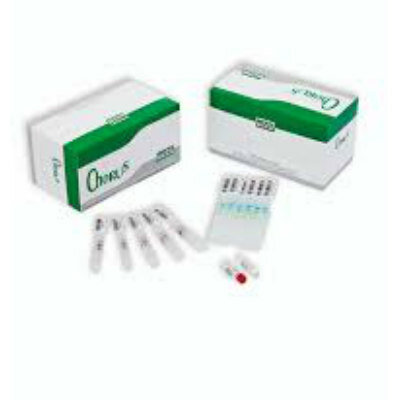Study Initiated to Fight Metastatic Breast Cancer with Innovative Nanoparticles
By LabMedica International staff writers
Posted on 10 Feb 2014
A USD 1.3 million grant has been given to an American pharmacy professor to further research a new class of inorganic nanoparticles that target primary cancer, and help control the disease’s metastases and recurrence.Posted on 10 Feb 2014
Dr. Wei Lu, the recipient of the US The National Institutes of Health (NIH; Bethesda, MD, USA) grant, is an assistant professor of biomedical and pharmaceutical sciences in the College of Pharmacy at the University of Rhode Island (Kingston, USA), has discovered in his early research efforts that hollow copper sulfide nanoparticles are effective in delivering chemotherapy and heat through a laser that can burn the tumor.
The investigator will be using the four-year NIH grant to further his laboratory research with a focus on breast cancer, the second most frequently diagnosed malignancy in women worldwide. “We are developing a novel cancer therapeutic technology that has several innovative features: biodegradability, multimodality, and simplicity,” said Dr. Lu, who is teaming with pharmacy Prof. Bingfang Yan, a specialist in genetic and environmental factors that combine to control the expression of genes involved in drug response and the cellular switches related to tumor formation. “One nanoparticle can carry hundreds or even thousands of drug molecules to a target like a tumor cell,” he said.
Dr. Lu wants to improve photothermal ablation therapy, a process that uses lasers in cancer treatment. At first, high levels of laser treatments were required to burn and consequently destroy the tumor. Inorganic nanoparticles were introduced, approximately 10 years ago, to this process in animal tests, which provided better absorption of the laser light, generated greater heat, and in turn lowered the laser doses.
However, there are several problems with current nanoparticle-aided photothermal ablation therapy. For example, the current delivery technology does not allow the nanoparticles to be distributed evenly in a tumor, thus the heat generated by the particles is not evenly distributed. As a result, malignancy can continue in the site receiving sub-lethal doses of heat.
Furthermore, some types of nanoparticles, such as gold particles, are difficult for the body to eliminate. “As is the case with surgical removal of a tumor, getting all of the cancer is critical,” Dr. Lu said. “The new nanoparticles provide a three-way punch to the tumor: a more widespread ability in a tumor to distribute heat and burn the tumor, a more efficient and comprehensive way to deliver chemotherapy, and better use of heat to activate the chemotherapeutic agents and immunotherapeutic agents. The new nanotechnology has great potential to eradicate tumors."
“Such nanoparticles are introduced intravenously and are absorbed into a tumor,” Dr. Lu concluded. “This study is using near-infrared laser light instead of ultraviolet light or visible light because it penetrates tumor tissue better and has much lower side effects. In addition, these particles are readily degradable in the body, minimizing potential organ toxicity.”
Related Links:
University of Rhode Island














